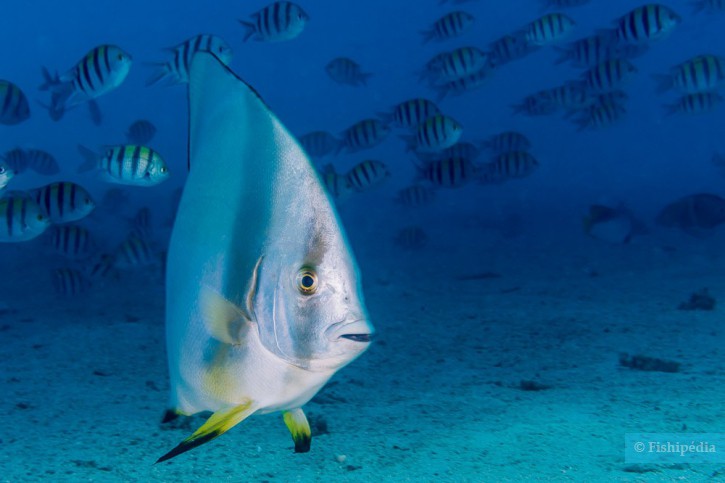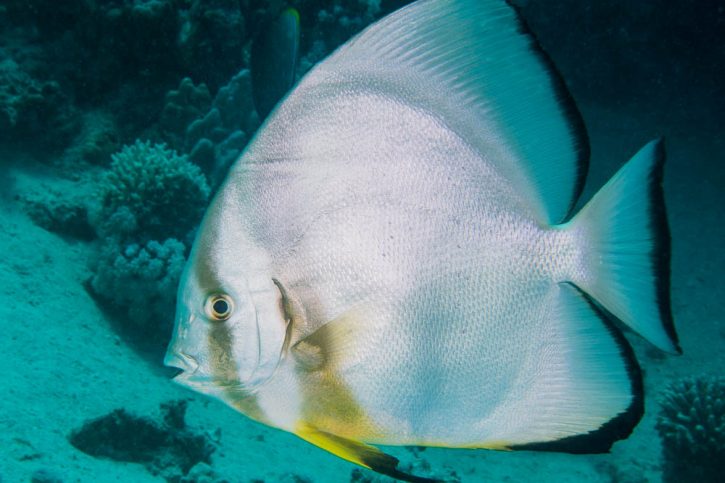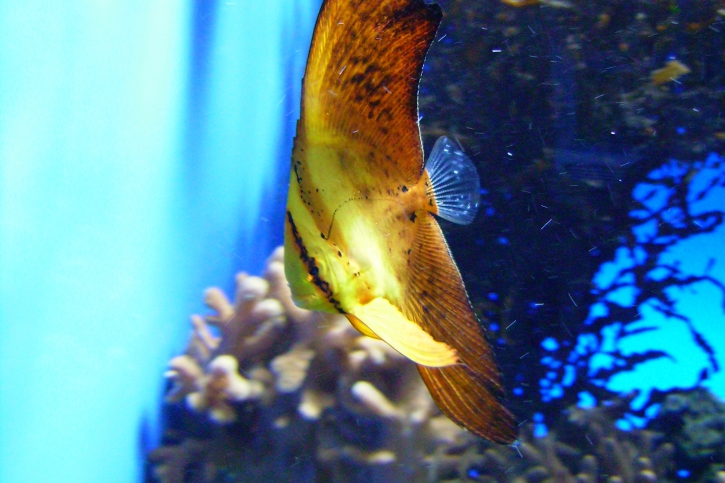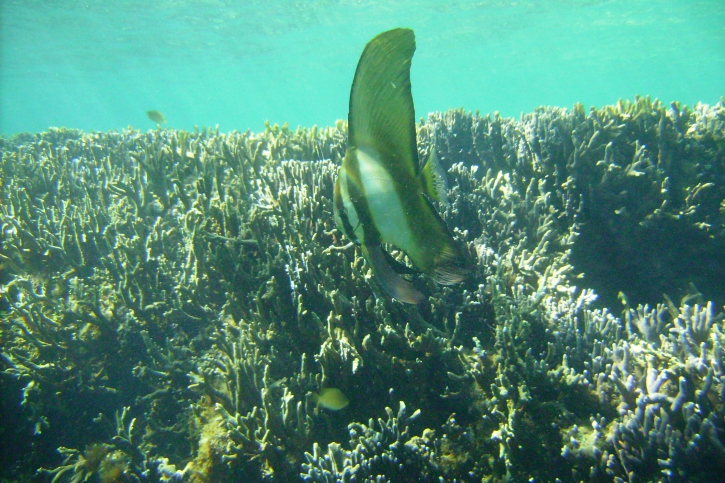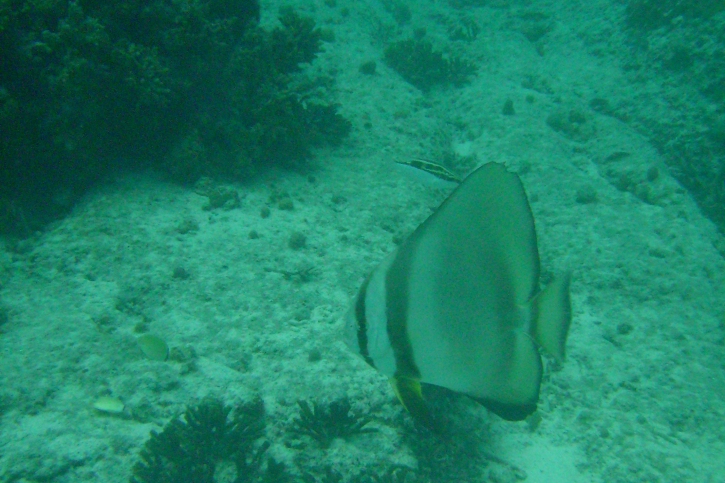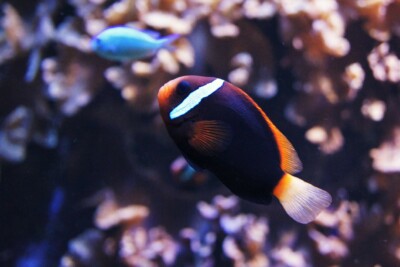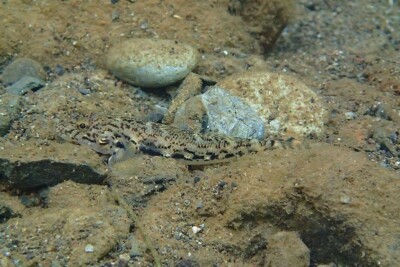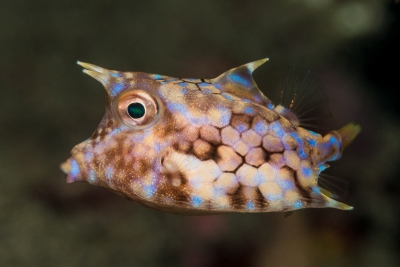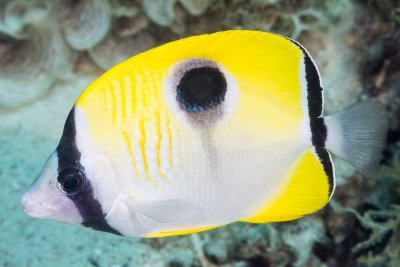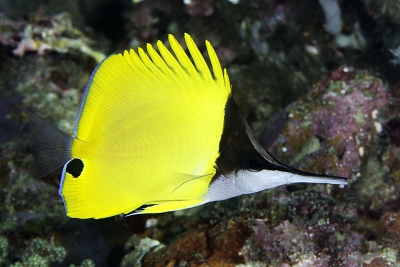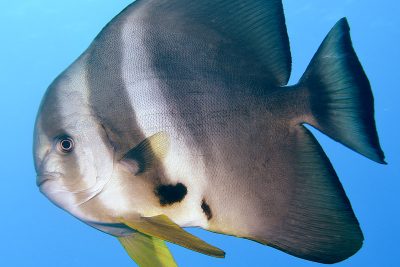orbicular batfish
| Scientific name | Platax orbicularis |
|---|---|
| Descriptor | Forsskål |
| Year of description | 1775 |
| IUCN category (World) | LC |
| Family | Ephippidae |
| Genus | Platax |
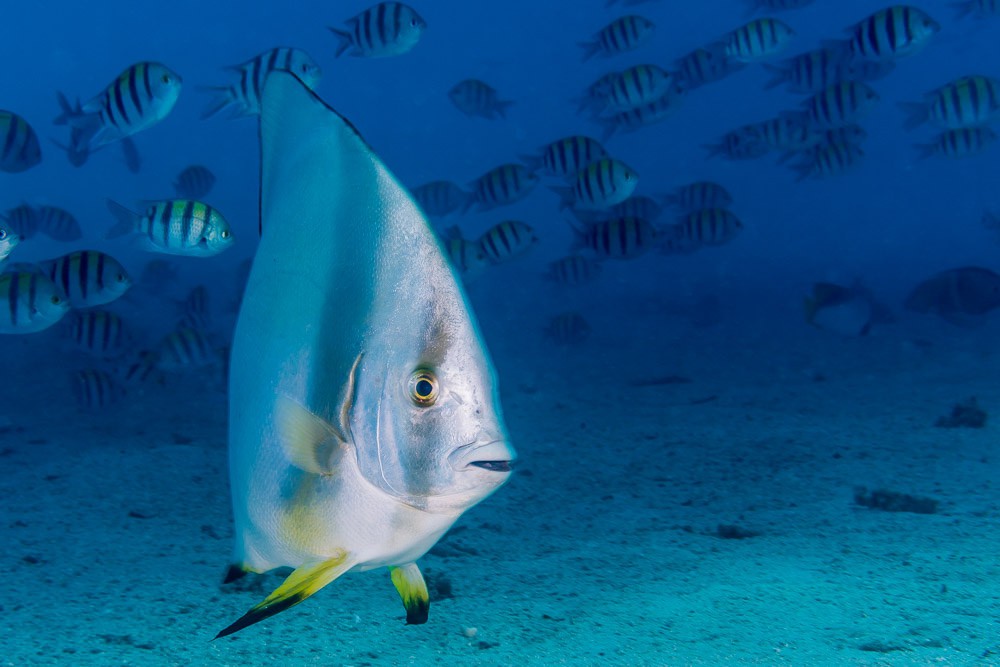

Introduction
Orbicular batfish, more commonly known as orbicular batfish or batfish, is a tropical marine fish native to the Indian and Pacific oceans. It is naturally distributed from East Africa to Oceania.
In addition to its original range, this species has been spotted in Florida. It is also possible that populations are present in the Mediterranean Sea.
Who is it?
Morphology
-
Average size50 cm
-
Maximum size60 cm
-
Longevity10 year
-
ShapeCircular
-
Average size50 cm
-
Maximum size60 cm
-
Longevity10 year
-
ShapeCircular
How to recognize This fish ?
Adult orbicular batfish are round in shape, laterally compressed, and of silver-gray color. A black vertical band crosses the eye. A second black band runs vertically from the rear of the pelvic fins to the base of the caudal fin. This fades partially with age. Depending on the fish's mood, colors may lighten or darken.
The belly and pelvic fins are yellow. A yellow border lines the pelvic, anal, dorsal, and caudal fins. The pectoral, dorsal, caudal, and anal fins are translucent yellow.
Juveniles are reddish-orange to brown with dark spots. The body is laterally compressed. The dorsal, anal, and pelvic fins are the same color as the body and are highly developed, giving the fish the appearance of a dead leaf.
Subadults are gray with highly developed black pelvic, anal, and dorsal fins.
Sexual dimorphism
There is no sexual dimorphism in this species. However, adults can change sex multiple times.
Behaviour & Life cycle
-
dietomnivorous with alguivorous tendency
-
Sociabilityliving as a couple or in a group
-
territorialNo
-
Way of livingdiurnal
The orbicular batfish is a pair-living or schooling fish that naturally resides mid-water and near the bottom. It is a calm-tempered species that particularly enjoys shipwrecks. Juveniles are most often seen in shallow areas like mangroves, camouflaged among the dead leaves of mangroves.
This fearless fish allows divers to approach it.
Reproduction
-
Reproductionovipare qui pond en eau libre
The orbicular batfish is an oviparous fish that spawns in open water all year round.
Reproduction occurs at nightfall, often during full moons. Females lay between 75,000 and 150,000 eggs measuring on average 1.3 mm. These typically hatch 24 hours after spawning. The larvae are around 3.7 mm. They feed exclusively on plankton. The juvenile stage is reached around 18 days, when individuals measure 15 mm.
Harmless species
This species poses no particular danger to humans in encounters in its natural habitat.
Origin and distribution

Geographic distribution & Conservation
With a wide geographical distribution and little commercial interest, this species is not threatened in its natural habitat. Orbicular batfish populations have been observed off the coasts of Florida, but the origin of this introduction remains unknown. Individuals have also been spotted in the Mediterranean Sea.
Conservation status of populations (IUCN)
What is its habitat?
Natural environment characteristics
-
Temperature20 - 28 °C
-
Depth0 - 30 m
Biotope presentation
Orbicular batfish are most commonly found at depths less than 30 meters, often near shipwrecks. Juveniles prefer shallow waters where they can camouflage themselves.
Immersion au cœur du biotope
Species of the same biotope
Fishkeeping
Not recommended
We do not recommend keeping this species in an aquarium. It has unpredictable needs which, if not met, generate significant stress, potentially leading to a shorter life expectancy, an interruption of its growth or the development of pathogens.
To go further
Sources & Contributions
Participation & Validation
The Fishipedia team and specialist contributors are committed to providing high-quality content. However, although the information comes from scientific sources or testimonials from specialists, the cards may contain inaccuracies.

Adrien Falzon
Translation
Translation done with the valuable contribution of our translators, who make this information available to a wider audience. We sincerely thank them for their commitment.
Scientific partners
Tags
#Ephippidae
#Platax
#barrière de corail
#berge peu profonde
#épave
#lagon
#Bay of Bengal
#Persian Gulf
#Great Barrier Reef
#mer d'Oman
#Philippine Sea
#Sea of Japan
#Red Sea
#South East Asian Seas
#Indonesian seas
#western Indian Ocean
#Western Tropical Pacific Ocean
#Oceania
#Bali
#Mauritius
#Réunion
#Lombok
#New Caledonia
#Nusa Penida
#French Polynesia
Same genus
Species of the same biotope
